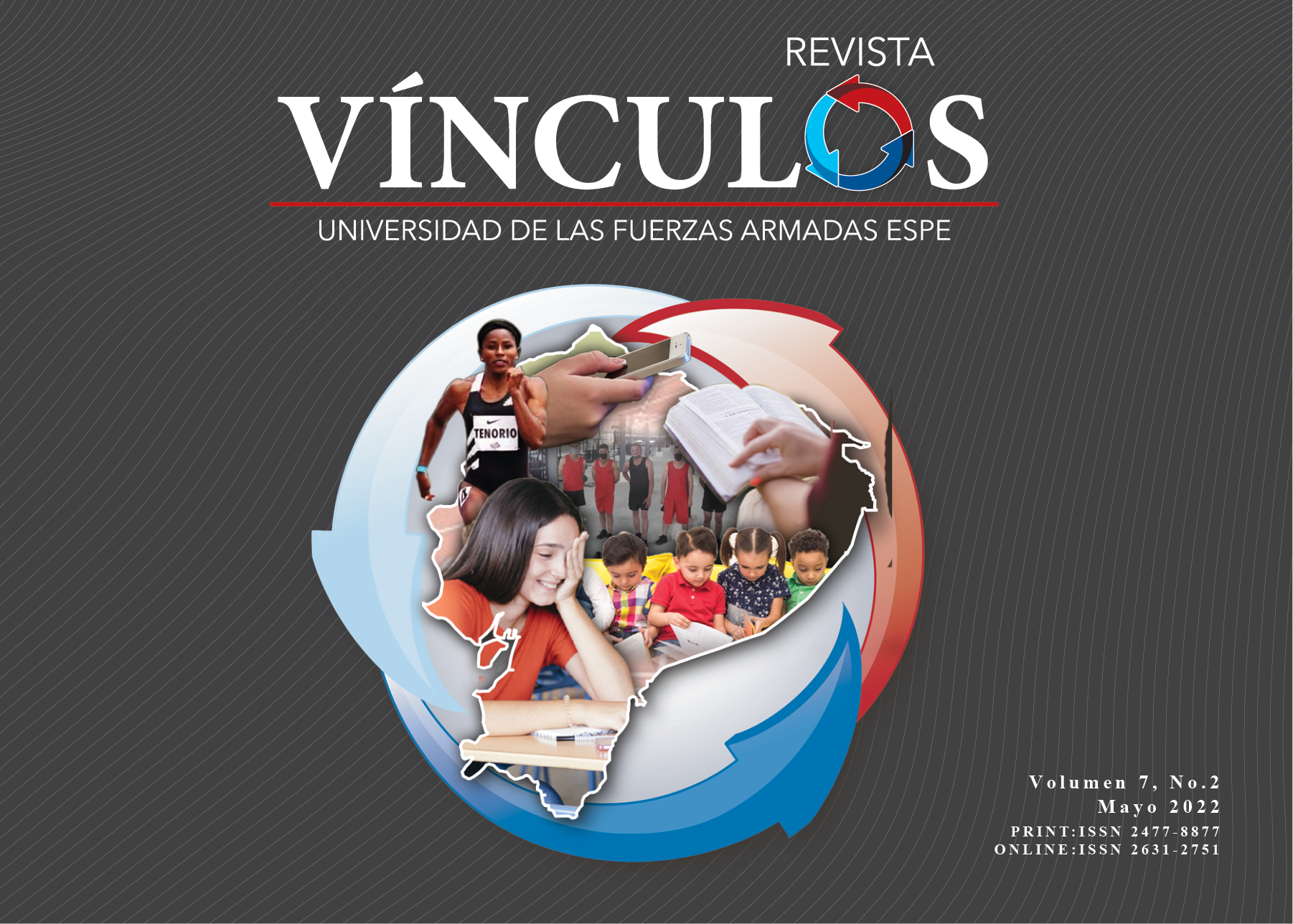Impacts of covid -19 on physical condition in young adults aged 18 to 23 years
Main Article Content
Abstract
Determining the impact of covid-19 as a new scourge, which is facing mankind and in particular, what deals with its direct effects on man, constitutes a pending task to be solved; its impact on the behavior of the physical and psychological condition is marked by all the affectations and pathological consequences that it leaves behind. This aspect led us to carrying out studies on the indicators related to the development of physical capacities, the nutritional status, and health in general with the purpose of identifying the negative effects caused by covid-19 on the behavior of physical condition in young adults aged 18 to 23 of the western part of the country since there was the possibility of suffering from this pathology; therefore, the implementation of confinement measures to avoid the spread of this virus, the prevailing limitations for the performing of physical activity, and the coupled with programs of an institutional educational and sports system established with innumerable deficiencies were developed to tackle down this virus. In order to search for what was proposed, a qualitative-descriptive study was carried out by using methods of the theoretical and empirical levels of scientific research with an emphasis on measurement, which allowed us to find a marked decrease in the levels of physical condition as a result of limited physical preparation because of the decrease of people with a normal weight level of nutrition and the tendency to grow towards overweight and obesity of type 1 and 2, according to the classification established by the WHO (1992), in addition to the appearance of cardiovascular diseases associated with high blood pressure.
Downloads
Article Details

This work is licensed under a Creative Commons Attribution-NonCommercial-ShareAlike 4.0 International License.
Los autores que publican en esta revista están de acuerdo con los siguientes términos:
- Los autores conservan los derechos de autor y garantizan a la revista el derecho de ser la primera publicación del trabajo al igual que licenciado bajo una Creative Commons Attribution License que permite a otros compartir el trabajo con un reconocimiento de la autoría del trabajo y la publicación inicial en esta revista.
- Los autores pueden establecer por separado acuerdos adicionales para la distribución no exclusiva de la versión de la obra publicada en la revista (por ejemplo, situarlo en un repositorio institucional o publicarlo en un libro), con un reconocimiento de su publicación inicial en esta revista.
- Se permite y se anima a los autores a difundir sus trabajos electrónicamente (por ejemplo, en repositorios institucionales o en su propio sitio web) antes y durante el proceso de envío, ya que puede dar lugar a intercambios productivos, así como a una citación más temprana y mayor de los trabajos publicados.
How to Cite
References
Arnulfo Chaparro, Ortega Ortiz y Sebastián Romero (2019). Condición física en adolescentes (resistencia): valores
normativos de referencia para la población Bumanguesa 11 a 18 años. Tesis de pregrado. Bucaramanga, Colombia.
Diagnóstico ambiental, División de Estudios Medio Ambientales (DEMA), Grupo Empresarial GEOCUBA, GEODESA, La
Habana, marzo de 2018).
Instituto Nacional de Geodesia y Cartografía (2019) Mapa topográfico Managua. 3784-IV-b.1:25 000. La Habana.
GEOCUBA.
Merino, B. (Coord.); González, E. (Coord.); Aznar, S.; Webster, T.; López Chicharro, J. (Col.) (2006): Actividad Física y Salud en la Infancia y la Adolescencia. Guía para todas las personas que participan en su educación. Ed. Ministerio de Educación y Ciencia; Ministerio de Sanidad
Nutrición Hospitalaria. (2011). Batería ALPHA-Fitness: test de campo para la evaluación de la condición física relacionada con la salud en niños y adolescentes. DOI:10.3305/nh.2011.26.6.5270.
Pila Hernández, H, (2014) Primer estudio nacional sobre la condición física de la población cubana. Editorial deportes, La Habana.
Pila Hernández, H, (2015) Talentos deportivos: Detección, orientación y desarrollo. Jorge Maldonado Roldán.Chile.
Serra-Valdés M. (2020) Las enfermedades crónicas no transmisibles y la pandemia por COVID-19. Revista Finlay [revista en Internet]. 2020 [citado 2021 Sep 15]; 10(2): [aprox. 10 p.]. Disponible en: ttp://revfinlay.sld.cu/index.php/finlay/article/view/846

